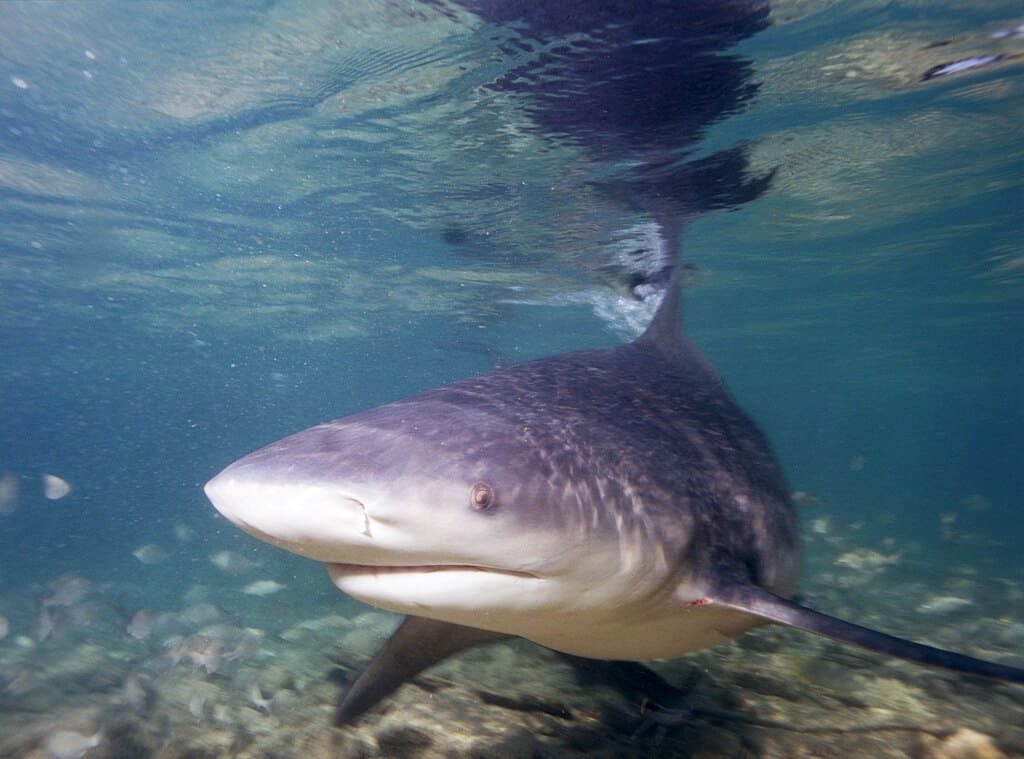Sharks, often seen as iconic ocean dwellers, have long intrigued scientists and the general public alike. While most people envision these formidable creatures patrolling the depths of the open sea, an increasing number of shark species are being observed venturing into American rivers. This fascinating shift in behavior raises questions about shark adaptability, the health of marine ecosystems, and what this means for the future of riverine environments in the U.S. By delving into the reasons behind this phenomenon, we can learn much about the adaptability and tenacity of these remarkable creatures.
The Most Notable River Sharks

The bull shark is perhaps the most famous shark known to venture into freshwater. Unlike other shark species, bull sharks possess remarkable physiological adaptations that allow them to thrive in varying salinity levels, from the ocean into rivers and even freshwaters. Their presence in rivers such as the Mississippi and the Potomac demonstrates their versatility and the interconnectedness of marine and freshwater ecosystems.
Understanding Sharks’ Physiological Adaptations

What allows bull sharks and a few other species to venture into freshwater is their unique physiological makeup. Unlike most sharks, bull sharks have kidneys that can regulate salinity levels, allowing them to survive in both saltwater and freshwater environments. Additionally, their internal salt levels are maintained through a process known as osmoregulation, which is crucial for their survival in less saline waters.
The Role of Migration and Breeding

Sharks swimming up rivers are often driven by the instinctual need for migration and breeding. Some shark species move upstream to find suitable breeding grounds, where reduced predation pressure and abundant resources create an ideal environment for juveniles. Rivers offer a haven for young sharks, away from the larger predators of the ocean.
Food Availability in River Systems

Rivers, with their diverse ecosystems, provide a plentiful source of food for sharks. Fish populations within rivers offer an ample food supply, supporting sharks’ dietary needs. The availability of prey along river courses can significantly influence a shark’s decision to explore these freshwater environments.
Rising Water Temperatures and Climate Change

Another factor contributing to sharks’ presence in rivers may be rising global water temperatures due to climate change. Warmer waters can extend sharks’ range further upstream than historically recorded. This shift in behavior underscores the broader environmental changes impacting marine life and highlights the need for continued monitoring and research.
Human Impact and Habitat Alteration

Human activities, such as dam construction and pollution, have altered natural waterways, which can inadvertently affect sharks’ natural migration routes. Dams can restrict movement, while pollution can alter the water quality, indirectly impacting sharks. It’s vital to balance infrastructure development with ecological health to ensure the continued survival of these majestic creatures.
Potential Threats to River Sharks

With habitat encroachment and pollution posing significant risks, river sharks face a range of threats in new environments. Entanglement in fishing gear, declining water quality, and anthropogenic disturbances can present significant challenges to their health and survival.
Conservation Efforts and Awareness

Efforts to protect shark populations have become increasingly important as their habitats extend into human-dominated areas. Raising awareness around the importance of these apex predators in maintaining ecological balance is critical. Conservation initiatives must address pollution, promote sustainable fishing, and encourage proper water management practices.
Monitoring Behavioral Changes through Technology

Advanced technologies such as satellite tagging and acoustic monitoring are providing researchers with invaluable insights into shark behavior. By tracking these animals, scientists can better understand their movement patterns and develop strategies to protect critical habitats, ensuring their continued presence in diverse aquatic environments.
Sharks and Their Complex Role in Ecosystems

As apex predators, sharks play a vital role in maintaining the balance of aquatic ecosystems. By venturing into river systems, they help control fish populations and contribute to the health of the ecosystem. Their presence in rivers highlights the complexity of aquatic food webs and their interconnected nature.
A Future with River Sharks

The growing presence of sharks in rivers serves as a reminder of nature’s adaptability and resilience. It compels us to contemplate the profound impacts that climate and environmental changes have on wildlife. Understanding and safeguarding river sharks not only benefits the species themselves but also enhances our comprehension of ecological dynamics and our place within these intricate systems.
Conclusion: Embracing Ecological Complexity

The phenomenon of sharks swimming up American rivers underscores the adaptability of these ancient creatures while drawing attention to the changing dynamics of aquatic ecosystems. By understanding the factors driving this behavior, society can make informed decisions to conserve and protect these vital habitats. Through careful stewardship and appreciation of nature’s complexities, we can foster a harmonious existence with these remarkable marine inhabitants.
- Bats as Harbingers of Luck—and Doom—in Global Folklore - July 4, 2025
- How Ocean Animals Are Affected by Climate Change - July 4, 2025
- What Triggers Mass Spawning Events in the Ocean - July 4, 2025

